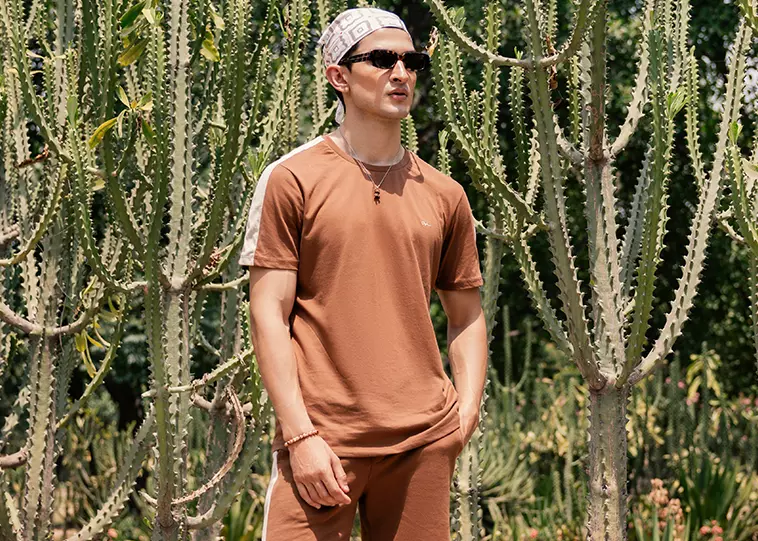
How Social Media Stars Are Shaping Fashion Trends
In today's digital age, social media stars, often referred to as influencers, have become powerful figures in the fashion industry. Their reach and impact on consumer behavior are undeniable, transforming how trends are set and followed. From Instagram and TikTok to YouTube and Twitter, these platforms have given influencers the tools to dictate what’s hot and what’s not. Here’s how social media stars are shaping fashion trends and why their influence is so profound.
The Rise of the Social Media Influencer
Social media influencers have carved out a significant niche in the fashion world. Unlike traditional celebrities, influencers often start as ordinary individuals sharing their style and lifestyle choices online. Over time, those who manage to attract a large following gain the status of fashion arbiters. Brands quickly recognized the potential of influencers to reach targeted audiences, leading to collaborations that further amplify their impact.
Authenticity and Relatability
One of the key reasons social media stars have such a strong influence on fashion trends is their perceived authenticity and relatability. Unlike polished advertisements or high-budget fashion campaigns, influencers present a more approachable and personal image. Their followers often view them as friends or peers, making their fashion choices seem more accessible and attainable.
For instance, when an influencer shares a new outfit or fashion accessory, it’s often accompanied by personal anecdotes and genuine reviews. This authenticity resonates with audiences who are increasingly skeptical of traditional advertising. As a result, followers are more likely to trust and emulate the fashion choices of influencers, driving trends organically.
Instantaneous Trendsetting
Social media platforms allow for real-time communication and instant sharing. This immediacy has revolutionized how quickly trends can spread. When a social media star posts about a new style, it can go viral within hours, reaching millions of people across the globe. This rapid dissemination of information means that fashion trends can emerge and evolve at an unprecedented pace.
Take the example of TikTok, where fashion trends can explode overnight. Challenges and hashtags like #OOTD (Outfit of the Day) or #ThriftFlip showcase new styles and encourage widespread participation. Influencers on TikTok often dictate these trends, leading to a ripple effect where their millions of followers adopt and further propagate the styles.
Diverse Representation
Social media has democratized fashion by providing a platform for diverse voices and styles that were traditionally underrepresented. Influencers from various backgrounds, body types, and cultures showcase fashion in a way that is more inclusive and representative of the real world. This diversity has broadened the scope of fashion trends, making them more inclusive and accessible to a wider audience.
For instance, plus-size influencers have challenged the fashion industry's narrow standards of beauty by promoting body positivity and stylish options for all body types. Similarly, influencers from different cultural backgrounds introduce their traditional attire and unique fashion sensibilities to a global audience, enriching the fashion landscape with varied and vibrant trends.
Collaborations and Brand Partnerships
Influencers have become essential partners for fashion brands looking to reach new audiences. Collaborations between influencers and brands are now commonplace, with influencers often co-designing collections or serving as the face of new campaigns. These partnerships are mutually beneficial: brands gain access to the influencer’s dedicated following, while influencers enhance their credibility and earn significant income.
A notable example is the collaboration between social media star Chiara Ferragni and high-end brands like Dior and Louis Vuitton. Ferragni’s massive following and fashion-forward sense have made her a trendsetter, and her partnerships have further solidified her influence in the fashion world.
The Power of User-Generated Content
User-generated content (UGC) is another way social media stars shape fashion trends. Influencers encourage their followers to share their own takes on styles and trends, creating a community-driven approach to fashion. This not only boosts engagement but also creates a sense of involvement and ownership among followers.
Campaigns like #MyCalvins by Calvin Klein have successfully leveraged UGC by having influencers post photos of themselves wearing Calvin Klein clothing and encouraging their followers to do the same. This strategy not only spreads the trend but also creates a wealth of authentic content that the brand can use for further promotion.
Challenges and Considerations
While social media stars wield significant influence, their impact is not without challenges. The fast-paced nature of social media can lead to fleeting trends that may not have lasting value. Additionally, the pressure to constantly showcase new and trendy items can contribute to unsustainable consumption patterns.
Moreover, the authenticity that makes influencers so appealing can sometimes be compromised by overt commercialism. Followers are becoming more savvy and critical of influencers who appear to promote products solely for monetary gain rather than genuine endorsement.
Conclusion
Social media stars have undeniably reshaped the fashion industry, acting as modern-day trendsetters who influence millions with a single post. Their authenticity, relatability, and ability to engage with diverse audiences make them powerful players in setting and spreading fashion trends. As the digital landscape continues to evolve, the symbiotic relationship between social media influencers and the fashion world is likely to grow even stronger, driving innovation and change in how we perceive and participate in fashion.